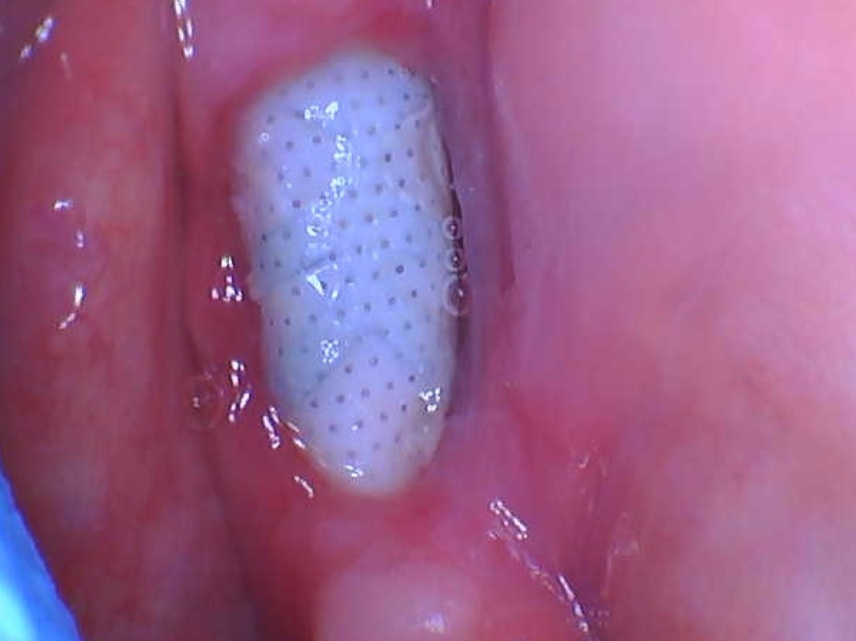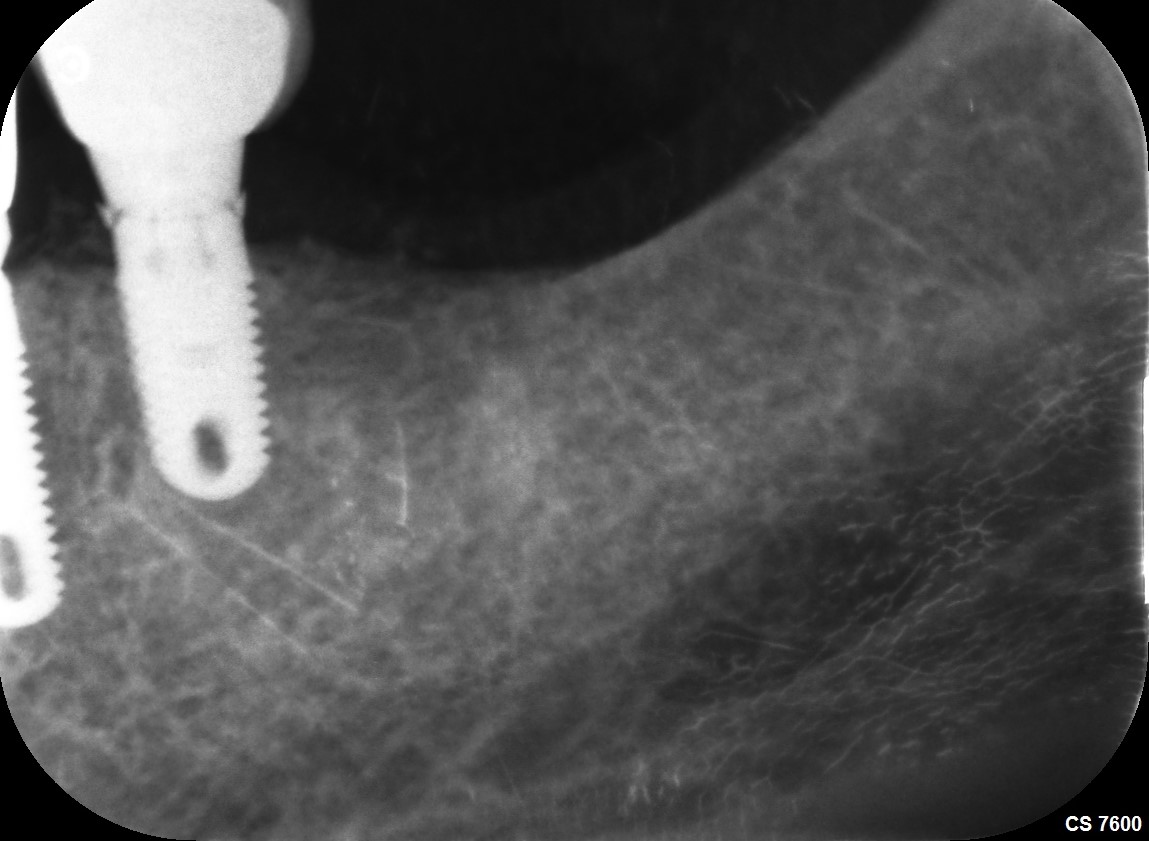Cantilever to Avoid Sinus Lift?
Dr. H. asks:
I have a great periodontist who does all my treatment planning and implant placements. Everything is working out fine. My only concern is that I want to do a case with a cantilever. If we place implants in #4 and 5 sites [maxillary first and second premolars] I can cantilever off #3 [maxillary first molar]. This would avoid a sinus lift that the patient does not want. My peridontist says this will not work because cantilevers generally fail and always place a great deal of force on the implant adjacent to the cantilever. What should I do?
27 Comments on Cantilever to Avoid Sinus Lift?
New comments are currently closed for this post.
Erik Lennartsson
3/17/2009
I agree with your periodontist. It´s not a good idea to place a cantilever on only two fixtures. In my daily practice I place the most posterior implant slightly distaly angulated and in that way the patient get two premolars and one molar on the two fixtures. Without cantilever. If thats not possible, go for the sinusgraft. Good luck!
R. Hughes
3/17/2009
Pacific Implant has an angled implant just for this situation.
Ricardo
3/17/2009
Hello angulated the distal implant and put the other normal and forget the cantilever!
william richter
3/17/2009
I believe the torque would be the same with an angled implant and a cantilevered bridge.
Dwayne Karateew
3/17/2009
You and your patient should not be afraid of a sinus elevation. You fear and apprehension should be directed at the cantilever. If done, the restoration will fail with time and may take precious bone with it due to overload. Take the time, do the right thing and the treatment plan will pay you back in spades due complication free maintenance.
wjstarck
3/17/2009
How much residual ridge is there?
If
rdarnall
3/17/2009
Recent article in Clinical Oral Implants Research compared implant cantilever bridges and terminal abutment implant bridges and found no statistical difference in implant survival between the two. I have personally not seen a problem with cantilever bridges when care is taken with adjusting the occlusion to minimize force on the lever.
wjstarck
3/17/2009
How much residual ridge is there?
If less than 3 mm: Then a generic sinus lift is advisable. Nowadays these are no big deal. I'd typically use Dynablast paste for the graft material, and avoid harvesting any kind of graft from the patient. When someone is balking at a sinus lift, this is usually what they're afraid of.
If it's over 3 mm, I'd do bone compression sinus floor elevation through the osteotomy for the implant, inject my graft material, and screw the implant right in. Another option for very short alveolar ridge heights might be Bicon, although I've never used one.
BTW, if the ridge is 4-5 mm or more, feel free to drill straight through and screw your implant in. There are *no* adverse consequences to this. Over time, the bone of the sinus floor will migrate up the implant and eventually cover it.
Hope this helps, let us know how it turns out...
NOTE TO FORUM MODS: We need a ways to escape out potential HTML characters such as ASCII 60 (less than symbol). Otherwise, posts get truncated. Thanks
R Simons
3/18/2009
your periodontologist seems to be making the usual error of thinking of implants in the same way as teeth. The stress distribution through immobile implants is completely different to that of teeth. A one unit distal cantilever off the back of two implants in the premolar region works admirably (a screw retained protocol is an advantage). No doubt many would advocate a sinus lift, but for whose benefit? If the patient is happy with a slightly shortened arch, the only reason for more sophisticated treatment is to fund the down-payment on the maserati....
J. Heise
3/18/2009
If you fail to plan, you will plan to fail. A posterior/distal cantilever off of 2 teeth/implants, especially bicuspid/narrower implants is very, very risky. An antereior/mesial cantilever off of a cuspid/implant works well as does a distal cantilever off of a central incisor/implant replacing a lateral incisor also works well. I am talking about the maxillary arch now. Do the sinus lift. Site developement is very important. With all due respect to periodontists....they are not restorative dentists unless they are David Garber or Dennis Tarnow who are both periodontist and prosthodontists. Do not let your periodontists tx plan your case 100%
Dr Tushar
3/18/2009
Yes I agree that a cantilever is not such a good idea
periodoc
3/18/2009
Another thing to consider is that if any of the abutments of the cantilever bridge fail, the whole bridge is lost. Implant supported restorations are essentially independent of the surrounding teeth and can be used instead of irreversably altering teeth to support abutments. My two cents worth.
R. Hughes
3/19/2009
Interesting issue. I can see one distel pontic ie. a 12 unit fpd supported by 6 to10 rootforms. This depends on bone, placement, occlusion etc.
dr paraon dequiroz
3/20/2009
I have an identical case. I have thoroughly discussed with the patient the mechanics of a distal molar cantelever ( very bright patient a graduate of Cal Berkeley) attached to 2 implants. She does not want to
do the sinus lift.
I have 2- 13mm implants supporting the cantelever, making sure there is minimum force on the cantelever.
The case is over 1.5 months and no signs of bone loss.
Dr K. F. Chow
3/23/2009
A cantilever will work, provided that the 2 premolar implants have sufficient osseointegrated stability which is a function of the length and diameter of the implant together with the density of the bone as well as the bone implant contact area. Simply speaking, if you assess rationally(not emotionally),that the total osseointegration is strong enough, then cantilever! An alternative is to place an additional implant into the tuberosity and avoid the sinus altogether. Subjectivity is thus removed from the equation. Usually, there will be enough bone in the tuberosity in most cases.
Cheers.
Bruce McKelvy
3/24/2009
If the surface area of the implants together is great enough( see previous comment re length vs diameter) cantilevers are OK. I have done a number and all are holding well.
Jim Sylvester
3/24/2009
As a prosthodontist doing cantilevered fixed bridges for thirty years, I have not seen failures to implant supported cantilevers except for porcelain fractures due to weak metal structure of the bridge. You may get bridge loosening for inadequate coronal retention, but the implants themselves simply do not fail (assuming everything else is correctly managed such as occlusion and hygiene). Our problem is in thinking out of the box.
paraon n dequiroz
3/27/2009
CORRECTION: the 2 implant cantelever bridge I mentioned
is over 1.5 yrs ( not 1.5 months) as I described earlier with no bone loss.
Empirical Medicine
3/31/2009
The cantilever may be successful if correctly executed.
Does that "maybe" reach your standard of care?
What about the 1 in a 100 that fails?
The cantilever beats the implants to death, then you have large defect where the implants used to be and a low sinus. Now the patient gets a denture or a large autogenous graft spread out over multiple larger procedures to redo the implants.
Or they could do a simple sinus lift, possibly with with implants placed at the some time... with a 99% success rate and sound support.
Perhaps, planning for the worst and doing a little more site preparation up front would be more predictable and allow greater options if results are less than optimum.
Hope for the best, but plan for the worst!
aaron
3/31/2009
I agree with your periodontist, the sinus lift is the most predictable option longterm.
P. Dawood
5/30/2009
The most important issues to remember here are, first implants do very well with direct vertical force of occlusion, however they do extremely poor with sheer and cantilever forces, angulated abutments do not change this equation. Second the maxilla has a spongy poor quality bone most of the time, so #4 and #5 implant are not going to have an optimum support. Third it’s fair to say that all occlusion school of thoughts would definitely consider a first cantilever a fundamental mistake. Dr. I think your periodontist have seen enough disasters before, and he is trying to prevent another one. For your patient well being and your own protection take his advice. Good luck.
Richard Hughes DDS, FAAID
5/30/2009
There are other options, such as an angled STR implant from Pacific Implants in Rio Dell California. When you place this implant you have to abut to the next mesial tooth at the time of placement. Then from here on out it's regular C&B. The other is a unilateral subperiosteal implant. tHIS HAS TO BE ABUTTED TO ONE OR TWO MESIAL ABUTMENTS AND COUNTER SUNK ON THE DISTAL PEROPHERAL STRUT.
Dr Sengupta
7/7/2009
Distal cantilever in the molar area is not the first choice
however no case exists in a vacuum
If there are enough biomechanical factors in favor it will work
The following variables must be considered
a) How long and more important how wide are the retaining 2 implants?
b) how dense is the bone?
c)Was an osteotome technique used which would increase bone density
d)Promolarisation of the pontic
e) Low cusp form of the pontic
f) Occlusal protection
g) What is the pontic occluding against ...denture ..another pontic..
h) is the person a clencher or grinder
i) Is the person big small?
Every case is unique
Yes sinus graft and 3 implants is stronger but is it absolutly necassary for the case at hand?
Dont you owe your patient the opportunity of a more simple option that you can deliver and keep predictable based on your analysis and clinical expertise..?
Or do we use sledge hammers to crack all eggs and give the impression we are lining our pockets
York University Dental
9/8/2009
These cantilever techniques have very high risk of failure.
Emergency Dental Richmond
9/8/2009
I would not recommend attempting the cantilever unless the patient knows full well that there is the possiblity of failure in the future.
Dr. Tawfic Al Rabi
9/17/2009
If failure is a good option for you then use cantilevers.
The case might show positive success features initially but later on,it will fail.
Palmieri
9/18/2009
First of all, your patient is probably treated. Next time, begin with a Occlusal Rehabilitation Project. That means, full casts monted in Terminal Hinge axis located articulator and a essay wax-up. Can the cant-lever molar touch in full bite and desoclude in excentric movements? Do whatever you want! Can you install the last implant so the axis go trought the mid portion of first molar? Go ahead! Biomechanics is the clue. Consider oral biological enviromental (like: the natural teeth was lost under severe periodontal pathology) and make a good biomechanical project.
















